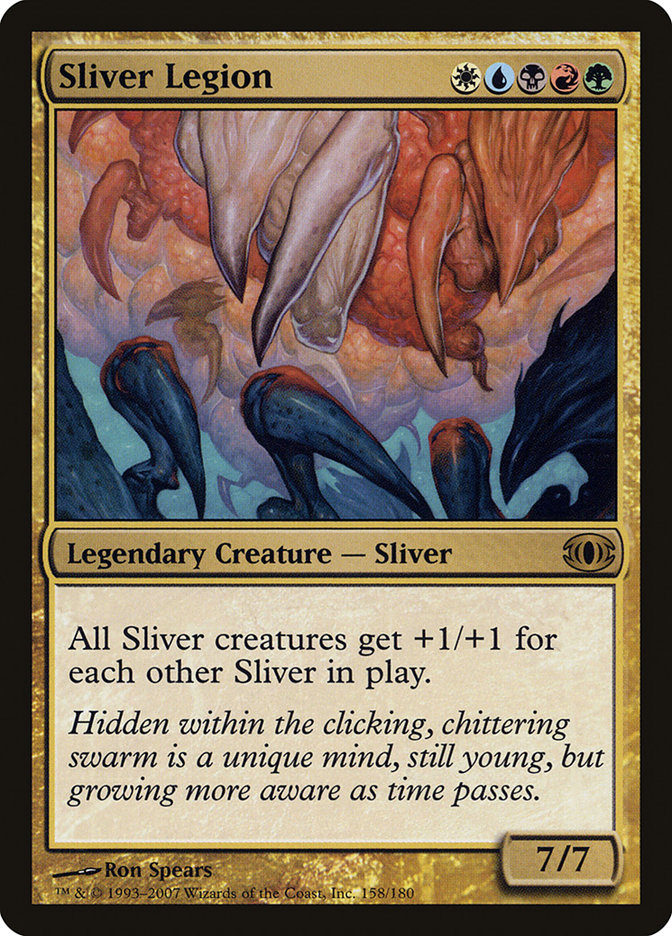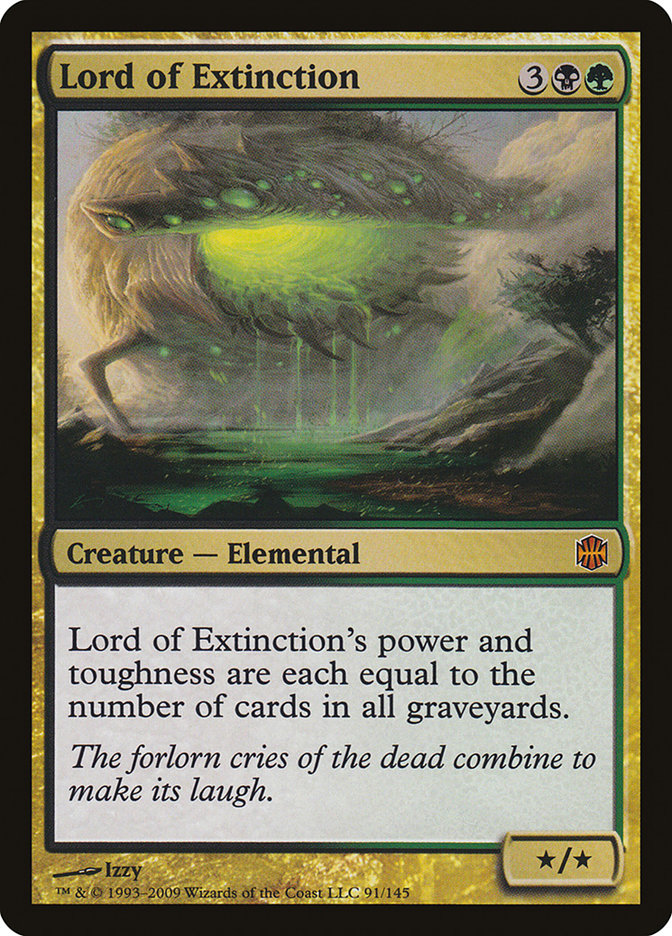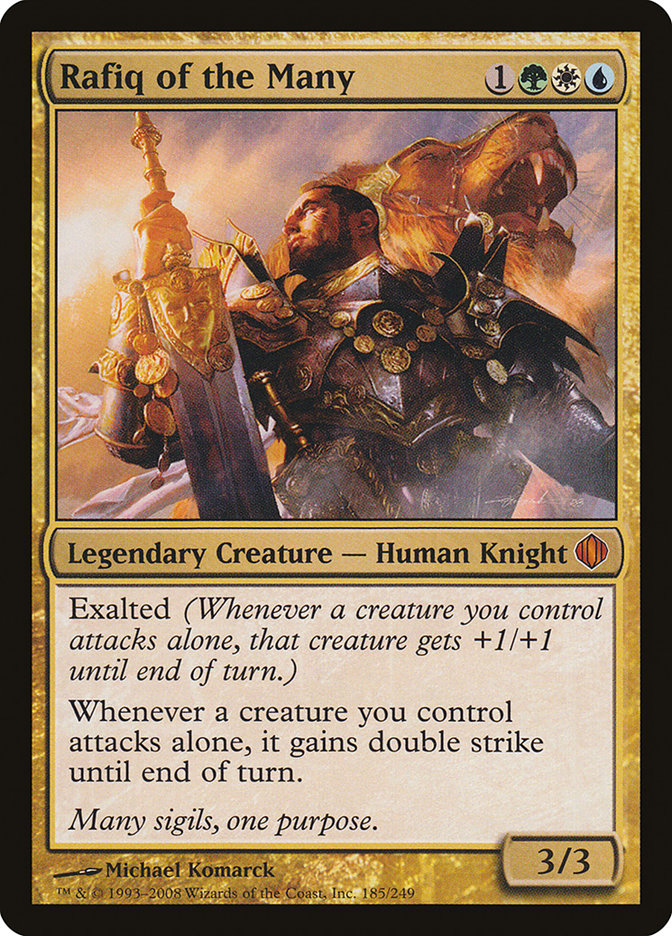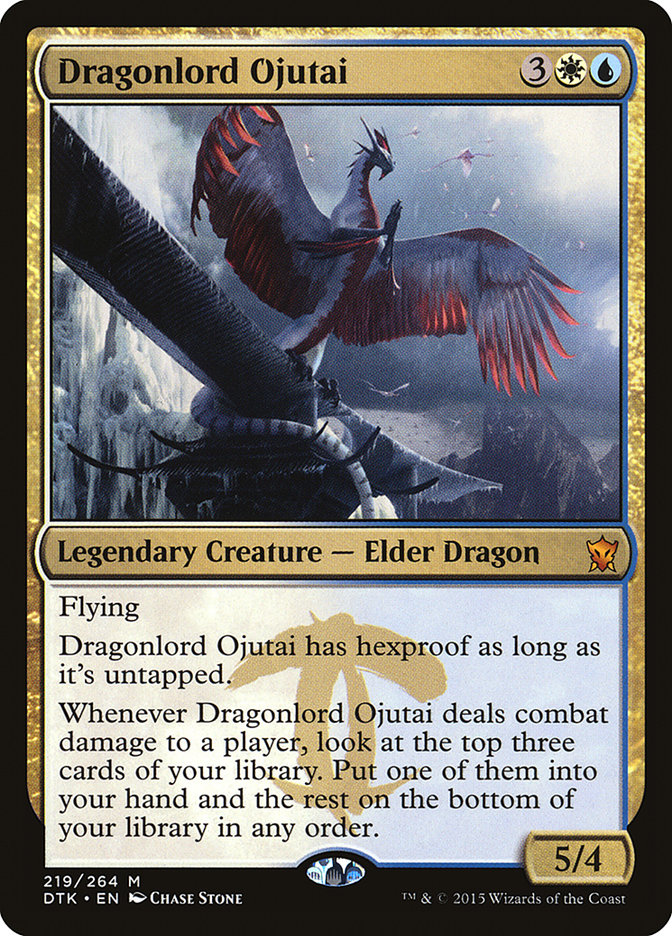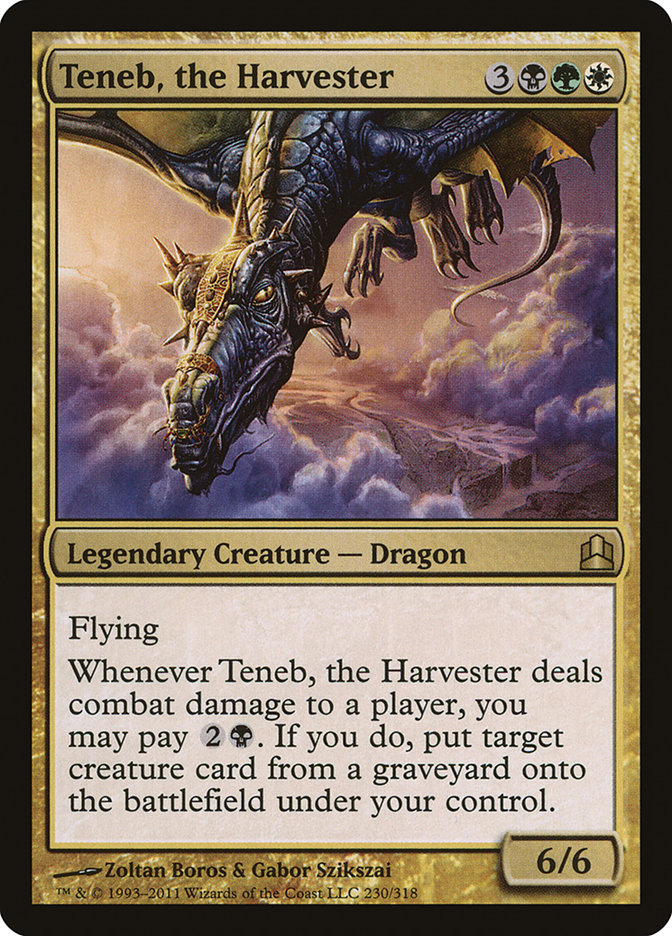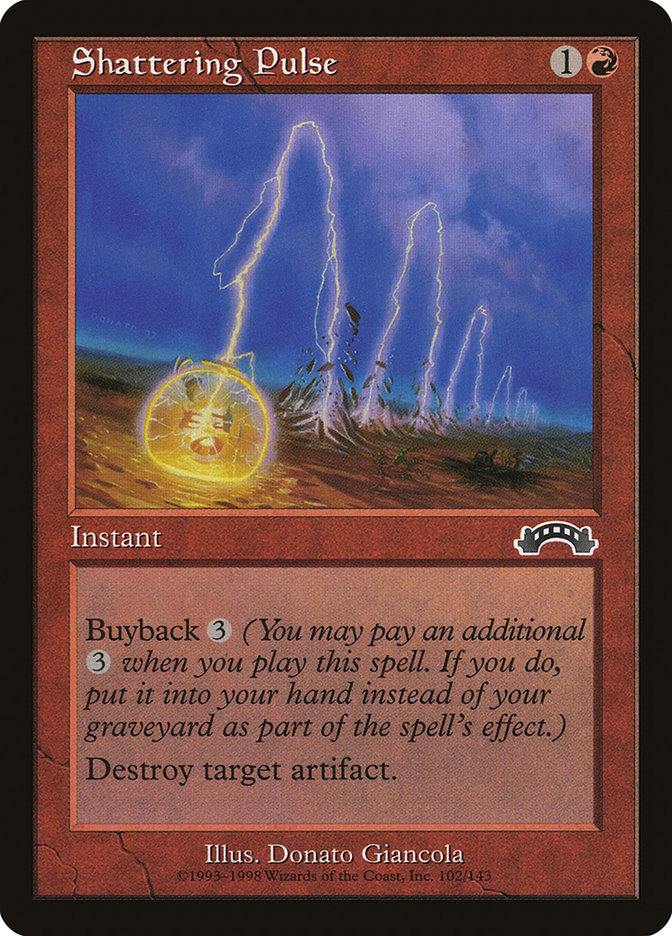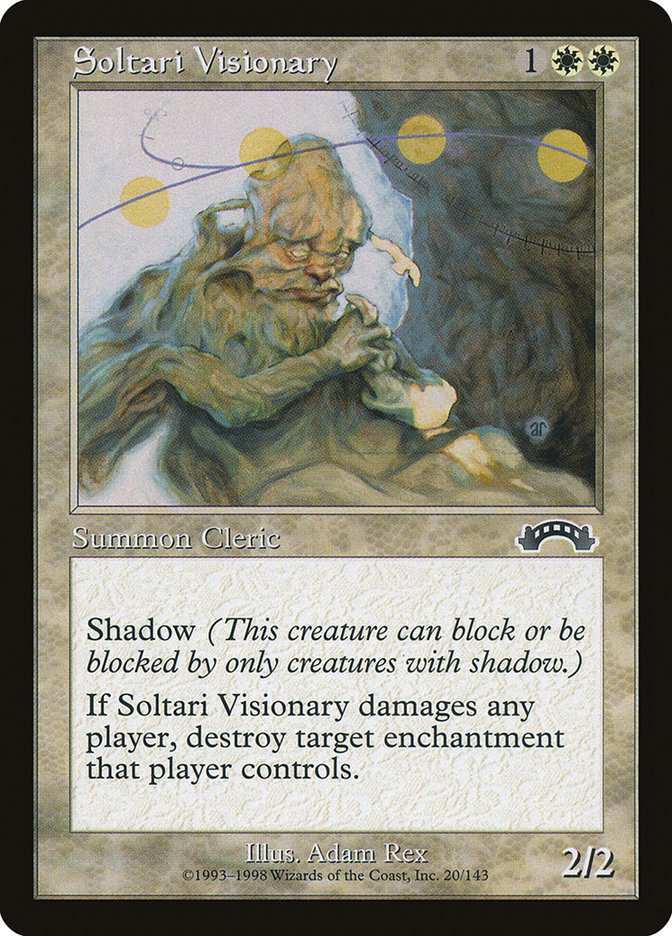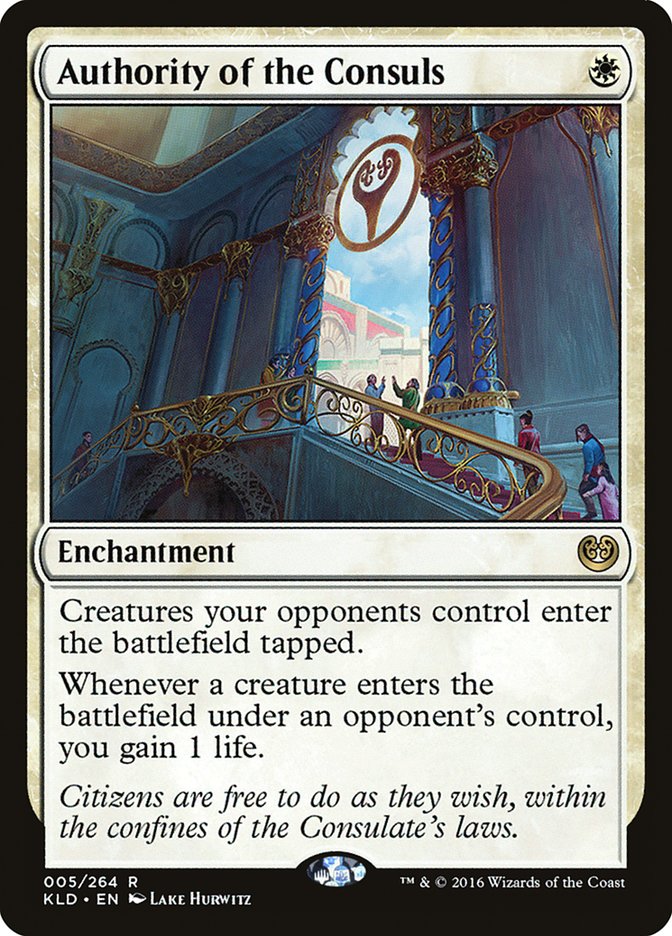What is best in life? Conan knows. The important part for Commander players is the first part Conan says: to crush your enemies. Crushing your enemies in Commander means that you need to adapt to the tactics your opponents use.
Building a good deck for Commander is difficult. Tweaking that deck to exploit trends in the metagame is much more difficult that it would initially appear. Adapting to a tournament metagame is an ongoing struggle, see basically every article from Shaheen Soorani (like this one). But you can do it, even against multiple opponents. The challenge is in identifying what changes to make. To combat this, I tend to use group trends to make adaptations rather than trying to beat a single player. Then I use broad answers before using specific answers to a problem like equipment. After that, it is all about making sure that my game plan is still being promoted so that I don’t weaken my deck too much in trying to go after my opposition.
Finding the Trends
When you are tweaking your decks to beat your friends, you need to first know what you should beat. You can build decks to make sure that one player never wins another game with a deck that you hate, but just doing that doesn’t stop greater group trends.
Also, doing that makes you kind of a jerk.
Instead, you should try to step back and notice something bigger, like your group all increasing the number of mana rocks they are running. With that info, you can start adapting to your local metagame. For example, during the release of Time Spiral block, Slivers exploded in popularity.
Two trends you can (eventually) expect groups to try at some point are:
– Abusing the graveyard.
– Voltron commanders to race damage.
These two strategies are the most common I have seen in several playgroups. You can reasonably expect to see an increase in tutors for players to morph their deck into a big pile of fifteen to twenty redundant cards because these styles of deck are very consistent. You are almost certainly going to see ramp in one of two forms, green land ramp or mana rocks, to speed up getting to the late game.
When you notice a trend, you want to double check. The
Identify Your Game Plan
This part of metagaming might seem obvious, but slowing down to take all the steps will improve your games. When you are looking to find cards to beat the shifts in your opponents’ game plan, a natural inclination is to find the most effective cards and run them. But be warned. This can lead to you diluting your game plan and being only half as effective as you need.
What is your overall game plan? For example, my Dragonlord Ojutai deck was recently tweaked to deal with the many, many tutors that my group is running and the growing number of decks relying on recurring or blinking creatures with enters the battlefield effects.
But I needed to make sure that my game plan wasn’t being impacted by overdoing the hate cards. When I looked to cards like Leonin Arbiter and Mindlock Orb I had to evaluate my fetchlands. Evolving Wilds and Terramorphic Expanse had to go and some of the other fetchlands, like Windswept Heath, were suspect. I didn’t want to hurt my own mana development while trying to punish my opponents.
When making changes, you can not only hurt your own development but you can dilute the deck to the point of having dead cards. Just like tournament Magic, you don’t want dead cards. How far can you dilute a deck to actually cost you in certain games?
Graveyard hate is one of the strongest examples. When you start running a lot of graveyard hate, say Relic of Progenitus, Scavenging Ooze, Withered Wretch, Angel of Finality, Bojuka Bog, Tormod’s Crypt, and Nezumi Graverobber, you end up in situations where your cards stop working. Unless your group has a tremendous amount of graveyard interaction, eventually these cards overlap too much. In some cases it will be correct to run all of these pieces, but for many decks it would be better to focus on three or four of the pieces that will make the most impact and assist your deck. A Roon of the Hidden Realm deck will definitely want Angel of Finality since it can reuse it. The deck might want the Scavenging Ooze and if Trinket Mage is in the deck, Relic of Progenitus and Tormod’s Crypt become much more attractive. But the Roon deck will likely not want to use cards like Rest in Peace and Grafdigger’s Cage.
If you are only adding reactive cards to prevent an opponent from doing something, you are setting yourself up for failure. Rather, you need to evaluate your overall game plan and find the cards to match.
A Teneb, the Harvester deck can run a whole gamut of graveyard hate but thrives with targeted removal to continue using Teneb’s effect.
Find All the Cards!
Once you know the trend in your group and you took some time to review your gameplan, you find cards that do what you need. You will often do this step before you identify your gameplan, but I wanted to stress the importance of using cards that benefit your deck, not just the ones that are blindly powerful but hurt your goals.
Finding the necessary cards is part of the brewer’s paradise that Commander represents. If you are a Commander player who regularly reads articles, I expect you have a strong knowledge of Magic already. You can likely think of several cards to do something specific when you want to fight against the trends your opponents are following. Don’t just stop here however! You’ll find some cards, sure, but you might miss some cards you’re ignorant of. I always recommend hitting a card database to find your options. Shattering Spree is a card not often played since Vandalblast was printed, but it is still very effective. Shattering Pulse is a card that predates many players, but it will devastate a Voltron style deck with lots of equipment.
Databases to use are plentiful. You can search this site using the advanced search option, you can also use magiccards.info which is far easier to use (and faster) than the commonly-touted Gatherer. In addition, using StarCityGames.com or magiccards.info with Chrome allows you to type the URL then tab and immediately search without loading the page first. I like efficiency.
After you search for cards to fight your opponents, break them down a bit. Broad answers are my preference to find first. The broad answers hit hard when you need to deal with something specific, but they also enable you to fight back against a wide variety of things. At my LGS, most of us have several decks and rotate between a few of them when we play. This may bias my preference, but if your group only has one or two decks per player, then using more specific answers to your group trends makes a lot of sense. Do what works for your group.
After broad answers, I use specific answers. If equipment is running rampant, cards like Carry Away and Murderous Spoils become much more powerful. I enjoy destroying my opponent’s resources, but stealing them is always fun as well.
When an opponent is lacking enchantment removal, then you force them to destroy their own Sword of Feast and Famine to stop you from having Carry Away… and well, carrying away the game (not sorry). Murderous Spoils allows you to kill a creature and steal things attached to it. These cards are more powerful against Voltron strategies but cannot handle other threats your opponents present. When everyone is playing with equipment, these cards devastate the table.
Always Advance Your Game Plan
I know I say this a lot. But every week I see people working against themselves or read another story about players using cards that halt their own game plan. I’ve beaten this horse to death, so I want to take a different approach. Look for cards that advance your game plan but attack your opponents in unconventional ways.
If decks based on enchantments are getting you down, Soltari Visionary can rumble into the red zone, unblocked, and take out a big scary enchantment. Repeatedly. There are many ways to answer things your opponents present without weakening your deck.
Updating Ojutai
My playgroup, as I said earlier in this article, has a boatload of enters-the-battlefield triggers and tutor cards. I have lost because of Academy Rector, Fabricate, Stoneforge Mystic, Green Sun’s Zenith, Momir Vig, you get the picture, right? Lots of search effects.
For Dragonlord Ojutai, I looked at what was not working, then I looked at what was underperforming, then I looked at a couple cards to just adjust.
Cuts:

Add:

The tutor cards and enters-the-battlefield triggers are beatable. Mindlock Orb and Leonin Arbiter make tutoring difficult and fetchlands much less effective. Of course, when I made this swap I had to adjust my manabase and cut my off-color fetchlands and the Terramorphic Expanse and Evolving Wilds. Two-color decks do great with basic lands, and I had enough dual lands anyway. To stop the enters-the-battlefield effects, I added Torpor Orb and Hushwing Gryff. The Gryff is my favorite new addition since I got to flash it in when an opponent evoked a Mulldrifter. This was a mean move, but I had no other use for the three mana, and the value was fantastic.
I added Torrential Gearhulk right after Kaladesh released because free instants are excellent, and I got lucky opening one right before they spiked in price. I wanted to have more variety so I went with Insidious Will. Resolute Archangel is a new addition to help me recover from the table hating on my opposition to their effects.
Authority of the Consuls adds to my token hate and haste commander hate in the deck. Meanwhile Fumigate replaces End Hostilities. Voltron strategies are diminishing, and Fumigate has a better upside right now. Glimmer of Genius replaces Jace’s Ingenuity because I would rather see four cards and use two than have three cards to use but an increased chance to draw a blank.
Here is the final product:
Creatures (13)
- 1 Intrepid Hero
- 1 Fog Bank
- 1 Loxodon Gatekeeper
- 1 Wall of Denial
- 1 Mnemonic Wall
- 1 Stormtide Leviathan
- 1 Leonin Arbiter
- 1 Consecrated Sphinx
- 1 Snapcaster Mage
- 1 Imposing Sovereign
- 1 Hushwing Gryff
- 1 Resolute Archangel
- 1 Torrential Gearhulk
Planeswalkers (2)
Lands (38)
- 1 Strip Mine
- 6 Plains
- 1 Adarkar Wastes
- 1 Kor Haven
- 12 Island
- 1 Tundra
- 1 Minamo, School at Water's Edge
- 1 Flooded Strand
- 1 Temple of the False God
- 1 Dust Bowl
- 1 Azorius Chancery
- 1 Ghost Quarter
- 1 Hallowed Fountain
- 1 Calciform Pools
- 1 Mystic Gate
- 1 Reliquary Tower
- 1 Tectonic Edge
- 1 Command Tower
- 1 Rogue's Passage
- 1 Opal Palace
- 1 Temple of Enlightenment
- 1 Prairie Stream
Spells (46)
- 1 Ghostly Prison
- 1 Counterspell
- 1 Force of Will
- 1 Propaganda
- 1 Swords to Plowshares
- 1 Sol Ring
- 1 Fellwar Stone
- 1 Dismiss
- 1 Rewind
- 1 Impulse
- 1 Forbid
- 1 Capsize
- 1 Darksteel Ingot
- 1 Wayfarer's Bauble
- 1 Talisman of Progress
- 1 Mystic Remora
- 1 Mind Stone
- 1 Rhystic Study
- 1 Rout
- 1 Overwhelming Intellect
- 1 Pithing Needle
- 1 Azorius Signet
- 1 Return to Dust
- 1 Ponder
- 1 Negate
- 1 Mindlock Orb
- 1 Path to Exile
- 1 Preordain
- 1 Torpor Orb
- 1 Spell Crumple
- 1 Sphinx's Revelation
- 1 Rest in Peace
- 1 Aetherize
- 1 Swan Song
- 1 Perilous Vault
- 1 Treasure Cruise
- 1 Commander's Sphere
- 1 Supplant Form
- 1 Retreat to Coralhelm
- 1 Retreat to Emeria
- 1 Mystic Confluence
- 1 Void Shatter
- 1 Authority of the Consuls
- 1 Fumigate
- 1 Insidious Will
- 1 Glimmer of Genius

Your Turn
That was a big shift! The deck runs well, and Dragonlord Ojutai helps me dig to find whatever piece I need to keep my opponents under control. I identified issues I was facing, found cards that would work, and I’m happy with the result. I’m also now using specific hate, like Torpor Orb, to stop the cards that were crushing me.
How do you approach adapting your decks to your playgroup? Do you change them to meet new trends or do your decks largely sit without tweaks? How do you identify those trends in your playgroup?


